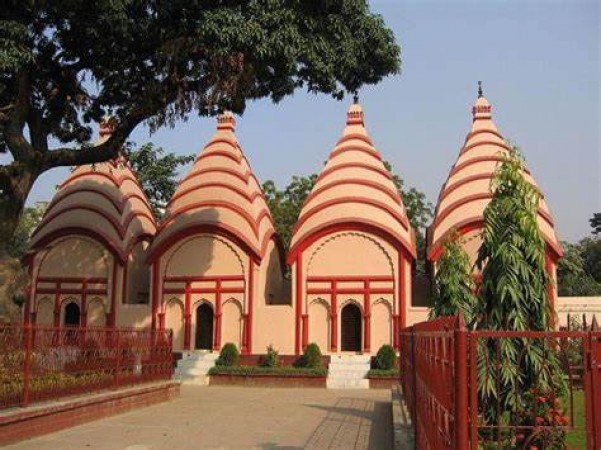
Santipur, a serene town in the heart of West Bengal, India, holds a hidden gem of spiritual significance known as Sugandha Shaktipeeth. This sacred site has been a center of devotion and intrigue for centuries, drawing pilgrims and curious souls alike. In this article, we embark on a journey to explore the rich history, spiritual significance, and cultural heritage of Sugandha Shaktipeeth.
Sugandha Shaktipeeth is believed to be one of the 51 Shaktipeeths scattered across the Indian subcontinent. These divine sites are associated with Goddess Shakti and are believed to be the spots where parts of her body fell during the cosmic dance of destruction, as depicted in Hindu mythology.
Situated in the enchanting town of Santipur, Sugandha Shaktipeeth is easily accessible by road and rail. The town's tranquil ambiance adds to the spiritual experience, making it a must-visit destination for devotees and tourists alike.
One of the most well-known legends associated with Sugandha Shaktipeeth is the story of Sati, the consort of Lord Shiva. According to Hindu mythology, Sati immolated herself in protest against her father's disrespect towards her husband. In his grief, Lord Shiva carried her burnt body, leading to the creation of Shaktipeeths across India.
The name "Sugandha" itself is intriguing, as it means "fragrant" or "aromatic." Legend has it that during the incident involving Sati's self-immolation, a fragrant flower known as "Sugandha" bloomed at this spot, hence giving the place its name.
Devotees from far and wide visit Sugandha Shaktipeeth to seek the blessings of Goddess Shakti. The temple here is a site of fervent worship, and various rituals and pujas are performed to honor the goddess. Navratri, the nine-day festival dedicated to the goddess, is a time of heightened devotion and celebration.
Sugandha Shaktipeeth is revered as a source of immense feminine energy, and it is believed that paying homage here can bring peace, prosperity, and empowerment to one's life.
The temple architecture is a testament to the rich cultural heritage of Santipur. Intricate carvings, colorful frescoes, and exquisite sculptures adorn the temple, offering a visual treat to visitors.
Sugandha Shaktipeeth comes alive during festivals, with grand processions, music, dance, and a bustling bazaar that showcases the vibrant culture of Santipur. It's a fantastic opportunity for tourists to immerse themselves in the local traditions.
While Sugandha Shaktipeeth is the main attraction, Santipur has more to offer. Visitors can explore the town's handloom industry, known for producing exquisite Bengal sarees. The intricate craftsmanship and vibrant colors make these sarees highly sought after.
Don't miss out on the local cuisine while visiting Santipur. The town is famous for its sweets, especially "Sandesh" and "Rasgulla," which are sure to tantalize your taste buds.
Sugandha Shaktipeeth in Santipur, West Bengal, is not just a place of worship but also a treasure trove of culture and heritage. Its spiritual significance, rich history, and cultural vibrancy make it a must-visit destination for those seeking a deeper connection with Hindu mythology and Indian traditions. Plan your trip to this hidden gem, and immerse yourself in the divine aura of Sugandha Shaktipeeth.
NTPC Invites Bids for 1,500 MW Wind-Solar Hybrid Projects in India
India-UAE Sign MoU for Technology Collaboration in Space, AI, and Renewable Energy
PM Modi Launches Mega Development Projects in Jodhpur, Rajasthan